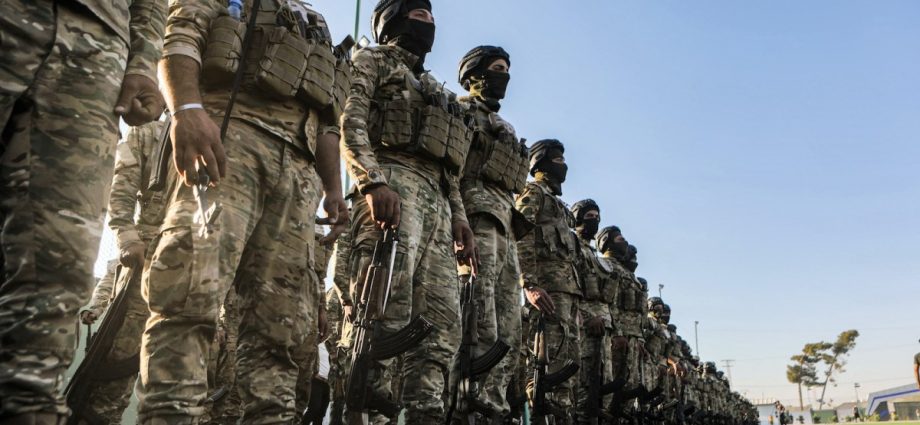What started in the autumn as the small, hesitant steps of reluctant dance partners has exploded in pace over the past few weeks, as Turkey and Syria begin open moves toward some form of reconciliation.
A few months ago, it was reported that the intelligence heads of both countries had held multiple meetings, encouraged by Russia. In recent weeks, those meetings have increased, accompanied by a chorus of players from the region.
Just last week, a Russian presidential envoy was in Damascus to meet with the Syrian president, followed a day later by Iran’s foreign minister appearing in the city. A week earlier, the United Arab Emirates’ foreign minister was received by Bashar al-Assad.
Two weeks before that, defense ministers from Turkey and Syria had met in Moscow. The new year has brought a flurry of activity from all sides with an interest in the decade-long conflict.
The attempted reconciliation is real, driven by the major impetus of the Ukraine war and the smaller one of President Recep Tayyip Erdogan’s spring election. So powerful are the forces driving the two countries together that they will almost certainly find a way to do it, papering over their all-too-real divisions.

But those divisions aren’t going anywhere. Like a shotgun wedding, bringing Damascus and Ankara back into an embrace will hurt a lot of bystanders.
On the surface, the contours of the disagreements between the two countries are clear. As Syrian Foreign Minister Faisal Mekdad said last week, “We cannot talk about resuming normal ties with Turkey without removing the occupation.”
The “occupation” is what Damascus calls the parts of northern Syria policed by Turkish soldiers. These borderlands are vital for Turkey. They house the majority of Syrian opposition forces and are critical to what Ankara hopes will be a partial resolution to the simmering tension of Turkey sheltering millions of Syrian refugees.
Erdogan’s plan is to move the refugees back into areas of Syrian territory, but policed by Turkey. Finding a creative way to keep some of these areas will be essential to his pitch to voters.
At least some of that will be on the table in any future negotiations with Damascus over normal ties. That much has been known for years. But what is different this time is the political opportunity afforded by the Ukraine war.
With Russia stretched by the conflict, it needs to redirect some of its forces away from Syria. With that, Iran sees an opportunity to fill the vacuum vacated by these troops.
For years, Russia, because of its air superiority, has played an unusual balancing role between Iran and Israel; at times shielding Syria from Israeli attacks, at times allowing Iran to move against Israel. If Russia’s footprint is lessened, the Islamic Republic could have more space to operate.
Hence why, in Beirut last week, Hossein Amir-Abdollahian, Iran’s foreign minister, publicly welcomed the possibility of reconciliation.
For Turkey, making peace, or some semblance of peace, with Damascus could be dangerous. The Syrian opposition that now mainly lives under Turkish protection could disappear into Turkey and might even seek revenge for that betrayal.
Yet the political price of millions of Syrian refugees languishing within Turkey’s borders is too high. Moreover, if Russia is committed to leaving, Turkey would prefer a drawdown that doesn’t leave Iranian operatives with free rein.
All of these complex calculations are having to be made at speed, after years in which the pace of political contacts was glacial. This, then, is the underlying tension driving the rapid rapprochement: Russia’s weakness because of Ukraine has created too enticing a political opportunity.
Frankly, the status quo suited Damascus and Ankara – Damascus could fulminate about a Turkish “occupation” but didn’t need to do anything and could continue retrenching its control over the populated eastern cities it really cares about. Ankara too could use the years of froideur to build up its infrastructure along the border and push Kurdish populations away from it. The long cold suited both sides.
But Russia’s war in Ukraine has thawed the conflict and all sides are now rushing to work out what they can salvage from it. The end result is almost predictable – more spaces in Syria back under the control of the government, more Syrians deported from Turkey, more room for Iranian forces to operate inside Syrian territory and more Kurds pushed from the borders.

If and when some form of cooperation is agreed the headline handshake will overshadow the underlying tensions.
But these tensions are not going anywhere. No amount of rapprochement can change the fundamental problem of the Assad regime, its lack of legitimacy. No agreement that keeps millions of Syrians beyond its border permanently, or forces them to return to an uncertain future, can be workable.
In the headlong rush to an embrace, these differences will be papered over or pushed to some indeterminate future. But those seeking an end to the disagreement between Syria and Turkey should heed the lessons that brought about its beginning: The more the Syrian state sought to paper over the cracks of the society, the more it created the conditions for an explosion.
This article was provided by Syndication Bureau, which holds copyright.
Faisal Al Yafai is currently writing a book on the Middle East and is a frequent commentator on international TV news networks. He has worked for news outlets such as The Guardian and the BBC, and reported on the Middle East, Eastern Europe, Asia and Africa. Follow him on Twitter @FaisalAlYafai.

